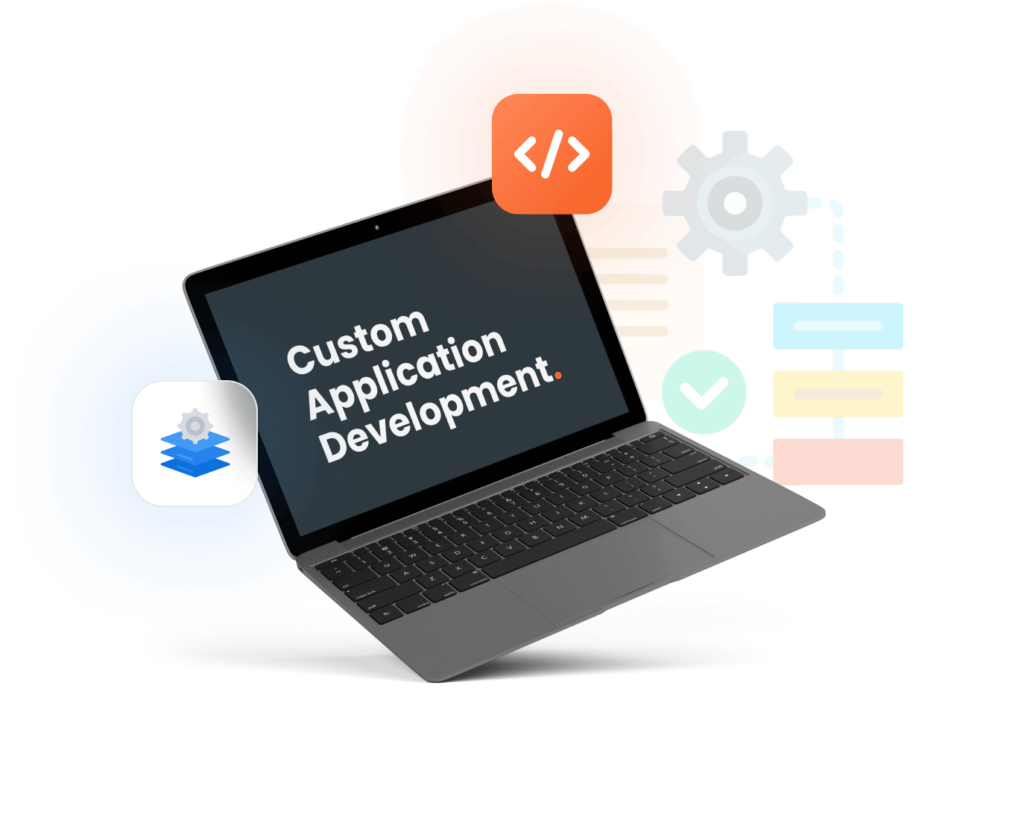> Services> Custom Application Development
Custom Application Development
We build the custom software that drives your success

a reflection of our clients’ success.
Our Custom Application Development Services
-
Custom Software Development
Custom software goes beyond off-the-shelf solutions by tailoring features to meet your specific business needs. It integrates with existing systems, automates repetitive tasks, and enhances team productivity. By addressing unique challenges, custom development streamlines workflows and provides a competitive edge.
-
Web Application Development
Web application development creates scalable, secure online platforms accessible from any device. It enables customer engagement, data management, and task automation. Whether for e-commerce or internal tools, web apps enhance operations and global reach.
-
Mobile App Development
Mobile app development delivers custom solutions directly to users' pockets. It enables engagement with your brand, service access, and task management on the go. Mobile apps offer real-time updates and foster deeper user connections, driving growth and enhancing user experience.
-
MVP Development
MVP development focuses on launching a core version of your app with essential features. This approach allows for early user feedback, concept validation, and iterative improvements, reducing risk and ensuring relevance before full-scale investment.
-
UI and UX
UI (User Interface) and UX (User Experience) are critical for effective design. UI handles the visual elements like buttons and layout, while UX focuses on the overall user journey, ensuring seamless and enjoyable interactions. Together, they make software both appealing and intuitive.
-
Software Testing
Software testing ensures quality by rigorously checking for bugs and verifying performance. This process guarantees that your software functions correctly, delivers accurate results, and performs reliably, protecting user data and building trust.
Custom Application Development Best Practices
Incorporate User Feedback
Engage real users early and often to test the software and provide feedback. This helps identify usability issues and ensures the software meets user needs. Make iterative improvements to the software, enhancing its functionality and user experience.
Ensure Cross-Platform Compatibility
If the software needs to work on multiple devices or operating systems, ensure it is tested for compatibility across all relevant platforms. For web applications, use responsive design principles to ensure the software performs well on different screen sizes and resolutions.
Manage Dependencies Wisely
Keep track of all external libraries, frameworks, and services that the software depends on. Then regularly update dependencies to benefit from improvements and security patches while ensuring they don’t introduce compatibility issues.
Implement Continuous Integration/Continuous Deployment (CI/CD)
Set up CI/CD pipelines to automate the process of integrating and deploying code changes. This helps in maintaining code quality and speeding up delivery. Include automated tests in the CI/CD pipeline to catch issues early in the development cycle.


Custom Application Development FAQ
Off-the-shelf software might be sufficient for basic needs. However, if existing solutions don’t perfectly align with your unique workflows, data management, or integration requirements, custom software solutions can be a worthwhile investment.
Discuss application integration needs upfront with the development team. They can ensure the software is built with compatibility and API integrations in mind.


